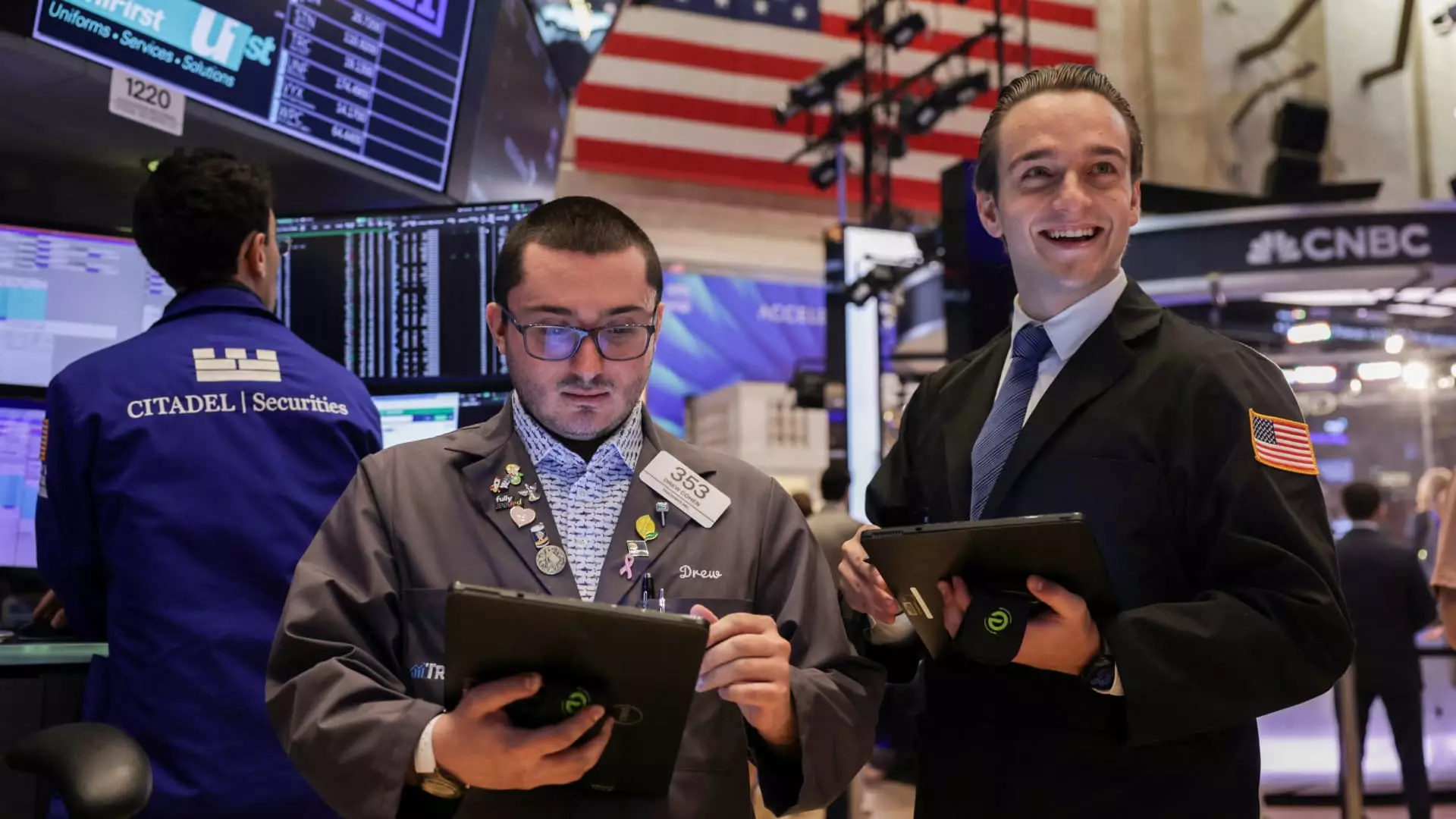The recent surge in the stock market, heralded as a sign of continued economic resilience, warrants a skeptical review. While headlines trumpet new all-time highs and record closes, this narrative arguably masks underlying vulnerabilities that threaten to unravel the so-called prosperity. The optimistic tone, largely propped up by stellar corporate earnings reports and upbeat trade negotiations, overlooks the fragility of these apparent gains. It’s crucial to question whether this rally is driven by genuine economic strength or merely financial engineering and temporary corrections that give a false veneer of stability.
While the S&P 500’s 0.4% rise and the Nasdaq setting intraday records evoke a picture of triumph, the reality is far more complex. High valuation multiples and a concentration of gains in a handful of tech giants—in particular the so-called “Magnificent Seven”—highlight an overheated market disconnected from broader economic fundamentals. The broader economy, riddled with inflationary pressures, geopolitical tensions, and trade uncertainties, often appears sidelined in this narrative as a secondary concern. The euphoria surrounding earnings reports, such as Alphabet and Verizon, is encouraging but also conveniently selective, masking the fact that many other sectors remain sluggish or are struggling with structural shifts.
The Illusion of Fundamental Support
Skeptics must question the robustness of the claim that the “bull market lives on, supported largely by favorable fundamentals.” The assertion that inflation is stable and interest rates are range-bound can be interpreted differently depending on one’s perspective. Inflation remains persistent, and any effort to dismiss it as under control could be a dangerous underestimation of inflationary pressures that could resurface with a vengeance. Similarly, the notion that interest rates will stay steady ignores the risk of abrupt policy shifts in response to new economic data, which could drastically alter the market’s trajectory.
Moreover, the comfort expressed by strategists like Terry Sandven ignores the reality of systemic vulnerabilities. The apparent resilience is being held afloat by a precarious reliance on liquidity injections, accommodative interest rates, and corporate buybacks. These mechanisms, while boosting stock prices temporarily, do little to address the underlying weaknesses in the economy—such as stagnant wage growth, increasing debt levels among consumers and corporations, and the looming risk of inflationary spirals.
Trade Turmoil: A Mounting Shadow
The narrative of robust trade deals and negotiations offers a sense of optimism but must be viewed skeptically. Despite President Trump’s claims of “massive” trade agreements, the details remain opaque, and tariffs—those relics of protectionism—continue to cast a shadow over global supply chains. The 15% reciprocal tariffs, rather than being a straightforward boon, risk entrenching economic nationalism and fostering greater uncertainty. That European officials are scheduling meetings to discuss trade further underscores the ongoing disagreements that threaten to undermine any real stability.
The persistence of tariffs and geopolitical tensions, such as conflicts involving Russia-Ukraine or Israel-Iran, further complicate the picture. These geopolitical risks are brushed aside in the enthusiasm for record markets, but they pose real threats. Market investors seem to be operating on the illusion that economic fundamentals are immune to global disturbances, ignoring history’s lessons that geopolitical upheavals often trigger sharp downturns.
The Hidden Fragility Beneath Market Euphoria
As we approach an intense earnings season and a Federal Reserve meeting, the optimism many exhibit appears increasingly detached from reality. Over 150 companies are scheduled to report earnings, yet these figures may largely reflect accounting maneuvers, stock buybacks, or selective optimism rather than genuine growth. There’s a disturbing tendency to interpret every positive earnings report as evidence of a thriving economy, disregarding the broader context of overvaluation and economic undercurrents.
The notion that the Federal Reserve will maintain interest rates at current levels is optimistic, but the risks are obvious. Any unexpected inflation surge or global financial shock could quickly force policymakers into action, unleashing a cascade of economic consequences that would derail this fragile market rally. The complacency surrounding monetary policy is dangerous; markets remain vulnerable to abrupt shifts that could send us spiraling into a downturn.
The recent rally in the stock markets is less a testament to economic health and more a reflection of investor complacency, manipulated earnings, and superficial trade optimism. While the headlines glow with success, beneath the surface lie fundamental issues – overvaluation, geopolitical tensions, and a fragile economic foundation – that threaten to destabilize the illusion of prosperity. It’s essential for investors and policymakers alike to recognize that these highs are not necessarily signs of enduring strength but perhaps just the latest chapter in a cyclical game of illusions. The question remains: how long can the markets pretend to be resilient before reality forces a reckoning?


Leave a Reply